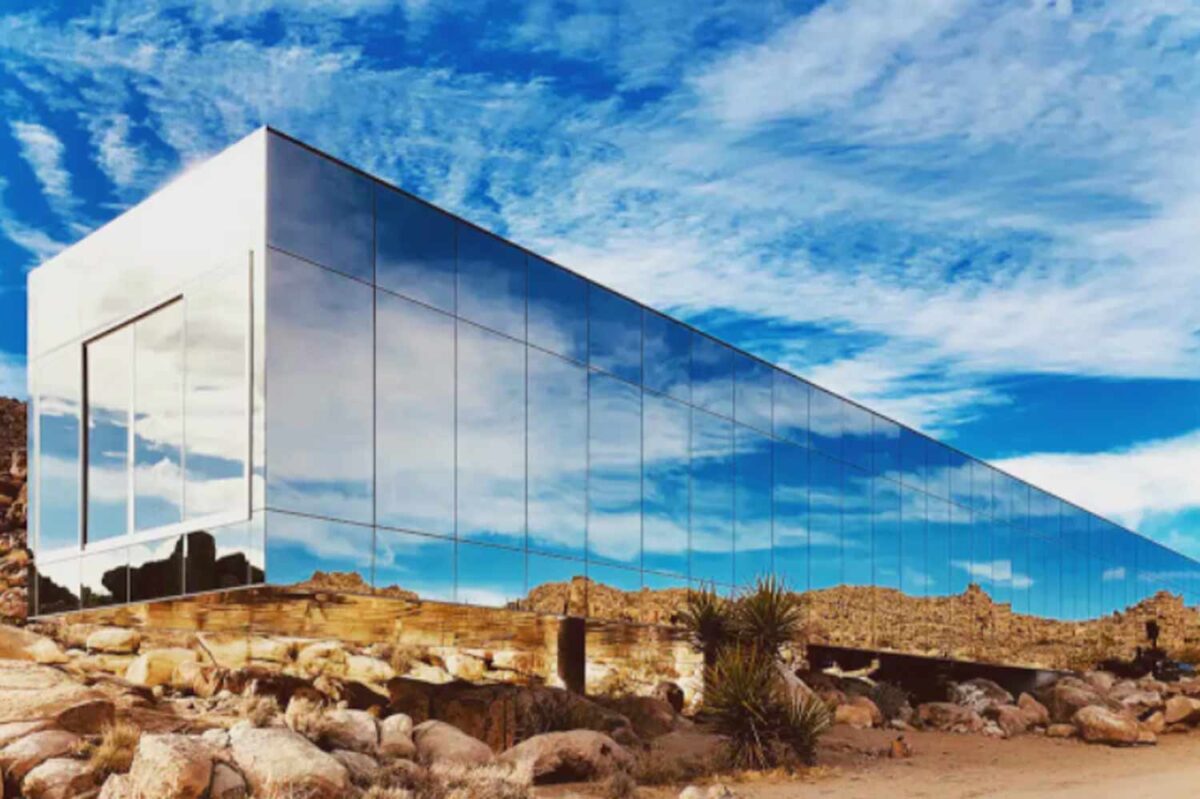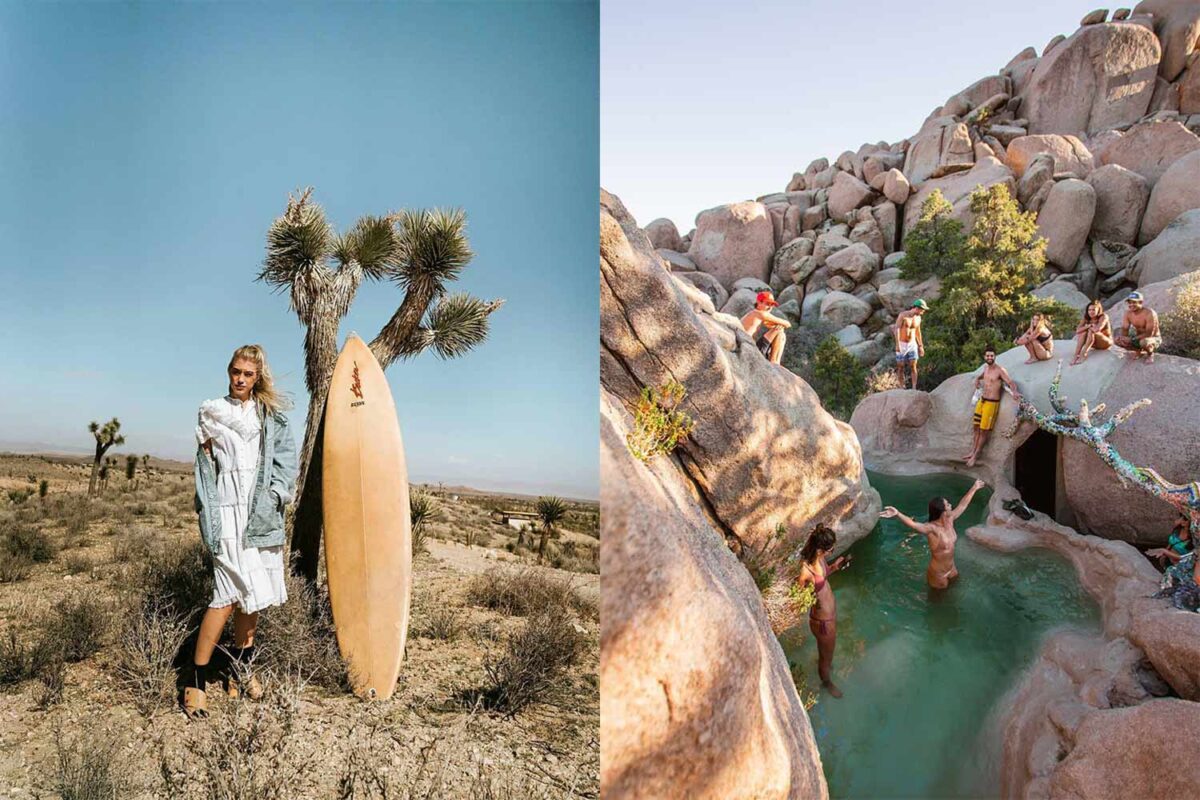If Hunter S. Thompson’s ‘red shark’ blasting through Nevada defined the American dream in the 70s, Joshua Tree’s Desert Yacht Club perhaps defines it in 2022.
Joshua Tree, a highland in California’s desert, used to be a refuge for misfits. It’s now gone the way of Australia’s Byron Bay, with some residents complaining that short term rentals and high-end buyers are wiping out affordable housing and killing the community vibes.
Many of these short term rentals are an advertiser’s wet dream. From gorgeous glamping tents to glass domes with expansive views, there is a wide range of accommodation on offer.
There are also flying saucers, pastel buildings, silver bullet airstreams, and yachts. Go figure.
Other residents, like the producer of American Psycho Chris Hanley, don’t mind the change, telling one reporter the new demographic is boosting creativity.
“This is the future look of the American West.”
Chris Hanley
He has a house where you can swim from the kitchen to the bedroom in an indoor pool. Oh, and the entire place is covered in mirrors, giving it its nickname, “the hidden house.”

There are 1,818 Airbnbs in Joshua Tree, and that’s not to mention all the Vrbo listings and hundreds of private campgrounds.
According to Airdna.co, demand for short-term rentals in Joshua Tree increased 54% between 2019 and 2021. This makes Joshua Tree the second fastest-growing market in California.
According to The New York Times, “As of March, there were 2,043 listings in Joshua Tree and Yucca Valley on Airbnb and Vrbo, more than twice as many as four years ago, according to AirDNA.”
The New York Times also reports: “One Realtor who works in Joshua Tree said that plots are now selling for quadruple 2019 prices.”
Some people fear this is pushing out families and creating a ghost town feel, while others are loving the profits and parties.
Though they are not indicative of how much time residents spend living there (it’s possible some of them are away most of the year while renting their place out), statistics show Joshua Tree’s population has actually increased over the last decade or so.
Joshua Tree’s population was 7,414 at the 2010 census. In 2019, 7,581 people are said to live there.

In response to this en masse, Airbnb ‘light bub moment’, parts of the area have introduced noise monitoring devices and started putting caps on the number of homes that are given short term rental permits.
As The New York Times reports, San Bernardino County’s board of supervisors is expected to announce changes to its policies soon, and “a debate is stirring about what all the construction and rules are doing to the beautifully odd trees and the spirit of the place” (legislation to protect endemic trees when people are building or modifying their properties is also being discussed, as lots of Joshua Trees are on private property).
Humourous Instagram accounts like @fuckyourairbnb have also sprung up, just to keep the new wave of investors and side-hustlers on their toes, mocking the cliche ‘Joshua Tree aesthetic’ of “desert boho” and Etsy decor.
This coming together of interests – of tech savvy creatives, advertisers and postmodern knowledge workers crowding out and gentrifying what used to be affordable spaces for hermits and hippies – has been seen all around the world, from Byron Bay to Barcelona.
As the work from home revolution continues, prompting more rich, entrepreneurial people to start living further away from big cities, expect this story to repeat itself again soon.
All this talk of gentrification aside (there are major, valid concerns around the increased cost of housing, and homelessness crises), it’s also worth pointing out that some of the reaction to this kind of change is often unfairly sweeping.
While some entrepreneurs can be arrogant and disrespectful, others can be deferent, helpful and inspiring.
As we have seen in Australia, there is also often an element of Tall Poppy Syndrome related to (some) people complaining about change. And some of those annoying, ahead-of-the-curve individuals end up putting their money where their mouth is and creating something awesome, which we could all learn and benefit from.
Read Next
